Blog
 2019-12-20
2019-12-20In Vietnam, cassava is ranged as the third most important crop after rice and coffee. And in the past few decades, the advancement of cassava starch processing technology has led to the rapid development of the cassava starch production industry in Vietnam. The modern mechanized cassava starch production in Vietnam gradually replaced the traditional small-scale manual production. As the demand for starch in the food and non-food industry increases, it brings new development opportunity for Vietnam's cassava starch production. Below we will introduce in detail about the past conditions and and new development opportunity of cassava starch production in Vietnam.
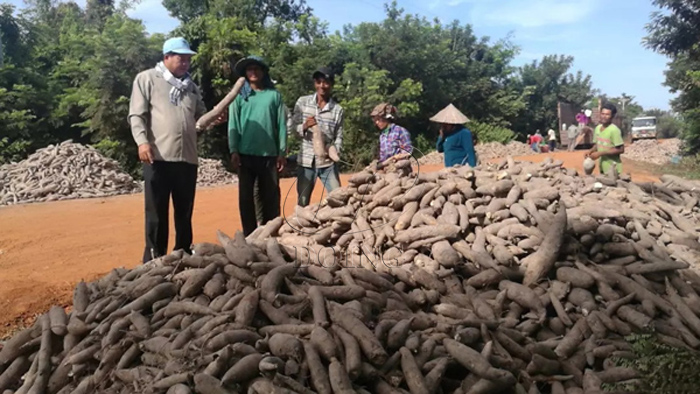 Cassava
Cassava
Past conditions of cassava starch production in Vietnam
1. The proportion of cassava starch processing is very small
In 1988, cassava starch production in Vietnam only accounted for about 10% of cassava output and was mainly used to produce local noodles and maltose.
In 1992, the total demand for cassava starch production in Vietnam (wet and dry starch) was about 40,0000 tons. Expect for household consumption and food processing, these cassava starch are also widely used for export and various industrial purposes, such as textiles, pharmaceuticals, cardboard, MSG, glucose, maltose, plywood, etc. .
Until now, cassava starch production in Vietnam has only accounted for a small part. Most of the cassava is exported directly to China, Thailand and other countries. A small amount is used to produce starch, cassava chips, animal feed, pharmaceuticals, biofuels, industrial alcohol, etc..
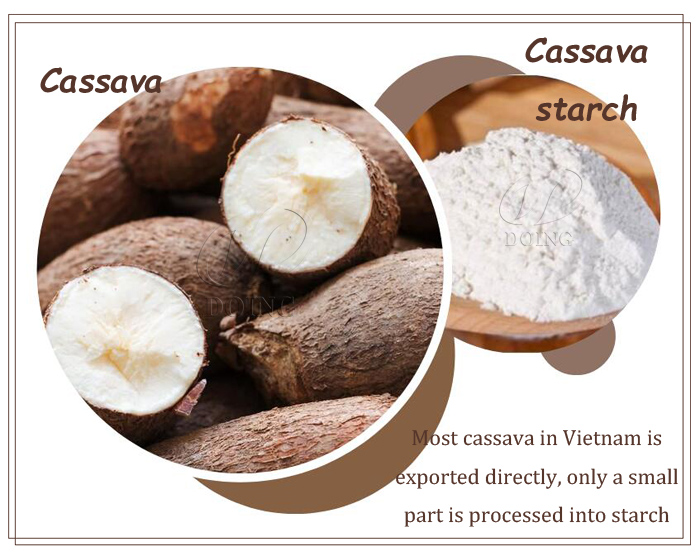 Cassava starch production in Vietnam accounts for small proportion
Cassava starch production in Vietnam accounts for small proportion
2. Processing technology is backward
Traditional cassava starch production in Vietnam mainly involves manual production, with only a few equipment used. Traditional cassava starch processing generally involves washing, peeling, grinding, starch extraction in a sedimentation tank, drying, and screening. After the cassava is washed and ground, it is filtered and placed in a precipitation tank to extract starch, and then the precipitated starch is further dried and purified to obtain dry starch.
There are two methods of drying: sun drying and mechanical drying. Most small-scale farmers or small starch factories generally obtain dry starch by sun drying, but the starch is easily contaminated during the drying process. Therefore the starch produced is of low quality, and is generally used to produce low-quality noodles.
Mechanical drying can produce high-quality cassava starch, and the produced starch can be used not only in food, but also in value-added products such as textile, paper and MSG. However, considering the capital requirements for drying starch, only a few large-scale manufacturers use mechanical drying.
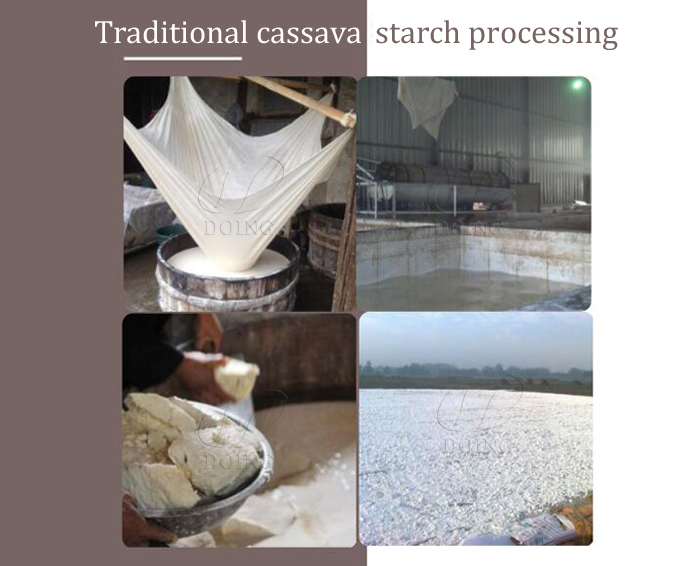 Traditional cassava starch production in Vietnam
Traditional cassava starch production in Vietnam
3. The starch produced is mainly used in the domestic market and rarely exported
Due to the low quality of starch produced, the majority of cassava starch produced in Vietnam is used for household consumption and food, and rarely used for export. About 40,000-45,000 tons of cassava starch is used for household consumption each year. It is used to make a variety of cakes and biscuits, fried meat and fish, and soup made with traditional Vietnamese diet.
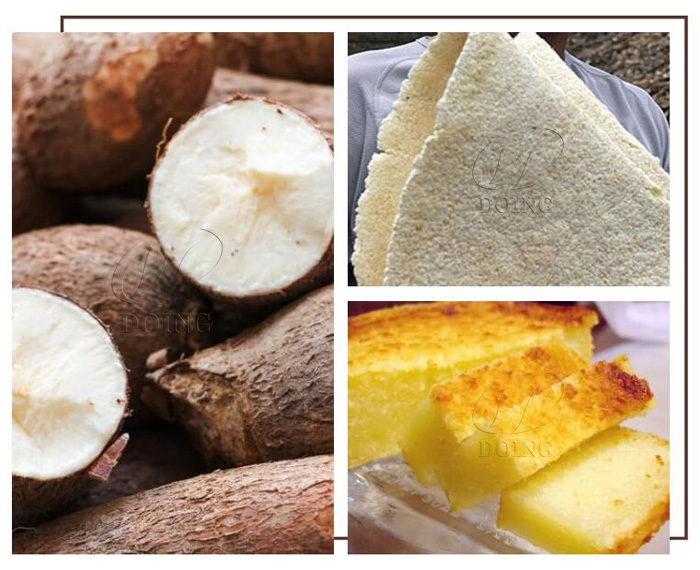 Cassava is processed into cake and cookie
Cassava is processed into cake and cookie
In recent years, due to economic development, the situation of the cassava starch market has changed. In Asia and the global starch market, cassava starch is the first choice for many food and non-food applications due to its excellent functional properties. The development of production in Vietnam has also ushered in new development opportunities.
New Opportunity for cassava starch production in Vietnam
1. Advancement in processing technology and equipment
With the development of the cassava processing industry, the cassava processing technology at home and abroad has continuously improved. Vietnam is also actively introducing new equipment and technology to process cassava starch.
The traditional methods of cassava starch processing are improved as follows: cleaning, washing, crushing, fiber separation, protein separation, sand removal, dehydration and drying. The cassava starch processing equipment is also more efficient. Using modern cassava starch processing machine can produce high-quality cassava starch within only half an hour, and there is also automatic control system can monitor the starch production process at any time to ensure starch quality.
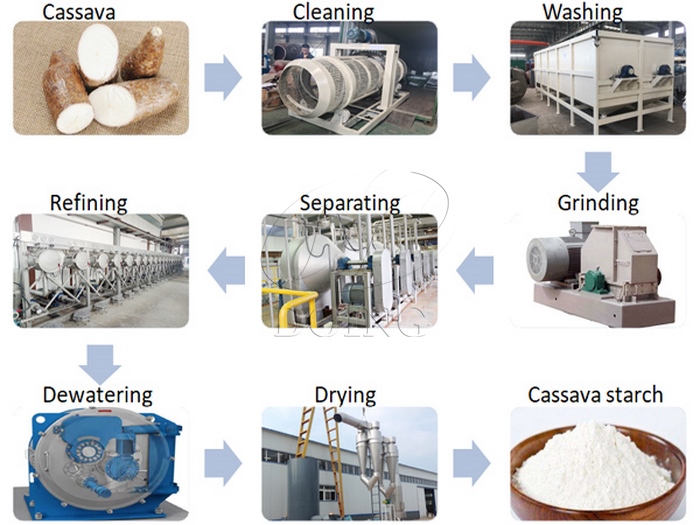 Modern cassava starch processing machine
Modern cassava starch processing machine
2. Increasing domestic and foreign market demand
Advances in technology not only make the quality of produced cassava starch higher, but also brings more uses for cassava starch.
In the food industry, in addition to noodles, biscuits, and cakes, cassava starch can also be used as a raw material for maltose production in northern Vietnam, as well as in confectionery production.
In the non-food industry, cassava starch can be used for sizing various cotton fabrics in the textile industry and in the production of glue for cardboard and other packaging materials. In addition, cassava starch with the required purity, whiteness and quality can also be used to produce tablets and pills. Moreover, adding cassava starch with urea, formaldehyde, and other chemicals, it can also be used as an ingredient in producing plywood industrial glue.
 Cassava starch be used in other industry
Cassava starch be used in other industry
3. More investors for cassava starch processing
With the increasing demand for starch in the food and non-food industries, the demand for cassava starch in the international market continues to rise. The demand for cassava starch has also led to more and more investors opening small and large cassava starch processing plants in Vietnam. Although small cassava starch processing companies still dominate in Vietnam, more and more small companies starts to use modern processing equipment. Moreover, with the development and modernization of the starch industry, more and more large-scale capital-intensive cassava starch factories will appear in Vietnam.
4. New markets
In the past, the Vietnamese starch is mainly exported to China. But now, Vietnam has signed a trade agreement with the European Union of 30,000 tons of Vietnam's local cassava starch duty-free quota to export cassava starch to the EU. New market brings new opportunities for cassava starch production in Vietnam.
In addition, the global demand for cassava starch products has also been growing. It is estimated that by 2022, the global cassava starch market will to grow to 7.5 million tons. So cassava starch has promising market.
Although Vietnam's cassava starch industry is still in the developing stage with small amount of exports. But it has great potential. So now is a good time to establish a cassava starch processing plant in Vietnam to grab market share. If you want to start cassava starch processing, please contact Doing Company, we can provide you with a turnkey project from equipment manufacturing, delivery, installation, commissioning to trial operation.
Want to know more about our products or services? Fill out the contact form below, and we’ll to get back to you and you will get the price list. Please also feel free to contact us by email or phone.( * Denotes a required field).